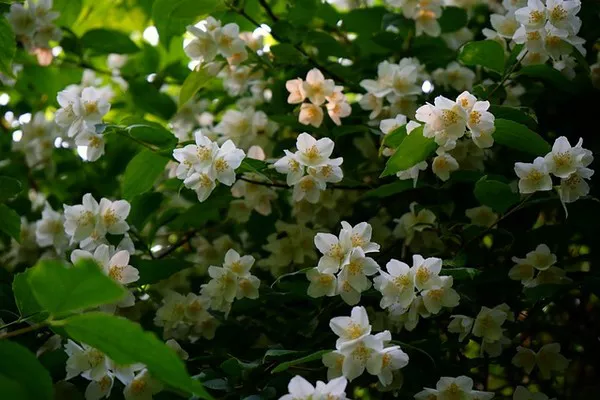Embarking on the journey of cultivating a wildflower garden is a rewarding endeavor that requires patience and knowledge. One critical aspect of this process is understanding the germination timeframe of wildflower seeds. Unlike conventional garden plants, wildflowers have unique characteristics that influence their germination period. In this article, we will delve into the factors influencing the germination time of wildflower seeds and provide valuable insights for gardeners looking to create vibrant and diverse natural spaces.
Factors Influencing Germination Time
The germination time of wildflower seeds can vary significantly based on several factors. Understanding these factors is crucial for planning and managing expectations during the gardening process.
1. Species Variation:
Different wildflower species exhibit distinct germination patterns. Some seeds may sprout within days, while others might take weeks or even months. It’s essential to research and identify the specific wildflower species you are cultivating to gain insights into their germination characteristics.
2. Seed Stratification:
Wildflower seeds often require a period of stratification, a natural process that mimics the winter conditions seeds experience in their native habitats. Cold stratification breaks down seed dormancy, allowing for more uniform and successful germination. Gardeners can achieve this by refrigerating seeds before planting or by sowing them outdoors during the fall, allowing winter weather to provide the necessary stratification.
3. Temperature and Environmental Conditions:
Wildflowers are highly responsive to environmental conditions. Temperature plays a critical role in germination, with many wildflower seeds requiring specific temperature ranges to break dormancy. Some seeds may germinate more readily in cooler conditions, while others thrive in warmer temperatures. Understanding the temperature preferences of the chosen wildflower species is vital for successful cultivation.
4. Soil Quality and Moisture:
The quality of the soil and its moisture content are pivotal factors in the germination process. Wildflower seeds should be planted in well-draining soil that provides the necessary nutrients for initial growth. Additionally, maintaining consistent moisture levels is crucial for successful germination. However, overwatering can be detrimental, leading to rot and mold. Striking the right balance between soil quality and moisture is essential for optimal germination.
5. Light Requirements:
While some wildflowers thrive in full sunlight, others prefer partial shade. Understanding the light requirements of the chosen wildflower species is crucial for providing the ideal conditions for germination. In some cases, seeds may require exposure to light to trigger germination, while others may prefer darkness. Researching the specific light preferences of your selected wildflowers is essential for successful cultivation.
See Also: What Do Purple Flowers Mean?
Understanding the Germination Timeframe
Now that we have explored the factors influencing germination, let’s delve into the general timeframe for wildflower seeds to sprout.
Early Germinators (1-3 Weeks):
Some wildflower species are known as early germinators, exhibiting rapid sprouting within one to three weeks of planting. These species often include poppies, cosmos, and bachelor’s buttons. Gardeners can witness the first signs of germination as tiny shoots emerge from the soil, marking the beginning of the wildflower garden’s transformation.
Intermediate Germinators (3-6 Weeks):
Many popular wildflower species fall into the intermediate germination category, taking roughly three to six weeks to sprout. This group includes varieties like marigolds, zinnias, and sunflowers. Patience is key during this period, as consistent soil care and environmental conditions are crucial for successful germination.
Late Germinators (6 Weeks to Several Months):
Some wildflower species exhibit a more extended germination period, ranging from six weeks to several months. These late germinators often include perennial wildflowers such as lupines, coneflowers, and black-eyed Susans. Gardeners cultivating late germinators should be prepared for a more extended waiting period, maintaining optimal conditions throughout.
Tips for Successful Wildflower Seed Germination
Research and Planning: Before embarking on your wildflower gardening journey, thoroughly research the specific species you intend to cultivate. Understand their germination requirements, including temperature preferences, light conditions, and any special considerations such as stratification.
Seed Stratification: If your chosen wildflower species requires stratification, plan accordingly. Refrigerate the seeds for the recommended period before sowing, or utilize natural stratification by planting in the fall and allowing winter weather to facilitate the process.
Optimal Planting Time: Timing is crucial when planting wildflower seeds. Follow recommended planting times based on your region and the specific requirements of the chosen wildflower species. Planting at the right time enhances the chances of successful germination.
Consistent Soil Moisture: Maintain consistent soil moisture without overwatering. Adequate moisture is essential for germination, but soggy conditions can lead to fungal issues. Regularly monitor soil moisture levels and adjust watering practices accordingly.
Protection from Adverse Conditions: Shield newly planted wildflower seeds from extreme weather conditions, such as heavy rainfall or unexpected frost. Consider using protective coverings or creating microclimates to ensure a conducive environment for germination.
Conclusion
Cultivating a wildflower garden is a fulfilling endeavor that requires a combination of patience, knowledge, and dedication. Understanding the germination timeframe of wildflower seeds is a crucial aspect of successful gardening. By considering factors such as species variation, seed stratification, environmental conditions, soil quality, and light requirements, gardeners can create an optimal environment for wildflower germination.
Remember that each wildflower species is unique, and patience is key throughout the germination process. With careful planning, consistent care, and a deep appreciation for the natural beauty of wildflowers, gardeners can create vibrant and diverse landscapes that celebrate the wonder of nature.


